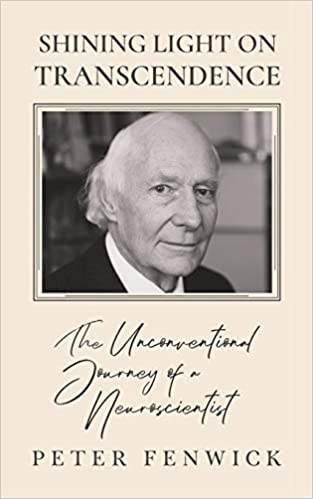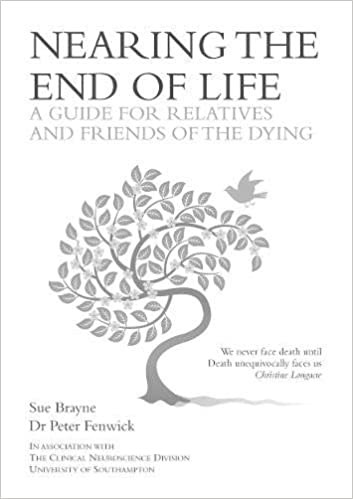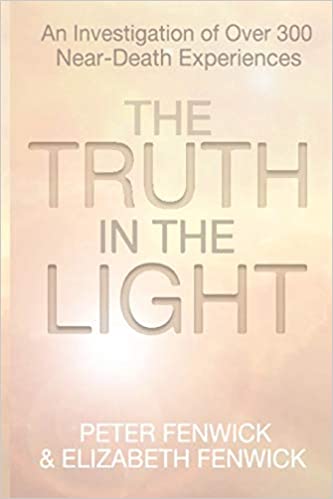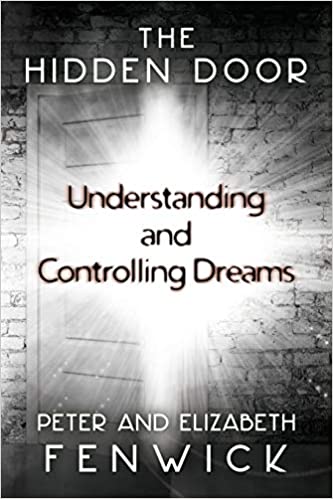Bücher
Die Kunst des Sterbens

Shining Light on Transcendence
What is consciousness? How does it relate to the brain, to the mind? Does it even extend beyond them? And if so, might those experiences — telepathy, extrasensory perception, near death experiences — be called ‚paranormal‘ because we can’t explain them by any normal means?
Anything with a firm belief structure, whether it is science or religious faith, limits experimentation and a free spirit of enquiry. I wanted to find a synthesis between these two fields of experience, the measurable and the immeasurable. And it seemed to me that the best – indeed, the only way I could find out more was by finding people who had such immeasurable experiences and studying them.
A few years ago I was introduced by a friend to a philosopher, Alain Forget, who, I was told, had a remarkable ability to give ‚energy. During this ‚energy-giving‘ process my friend had been aware of light radiating from him.
My own ego wanted to persuade this unusual man to allow me to put him under the microscope. But in doing so I found myself, perhaps reluctantly at times, under the microscope of his perceptual grasp of human nature. And I realise that it has changed me, and that much of what I thought about myself was not based in reality.
This book tells that story.
The Hidden Door


The Truth in the Light
Most of us at the very least wonder about our own immortality and many people are convinced that there is something beyond death, beyond the blackness of the grave. In Western Judaeo-Christian culture we absorb from an early age the idea that virtue now has its own reward – later. We are taught that the universe is essentially moral and that there are absolute human values. But increasingly, science presents us with a picture of a much more mechanical universe in which there is no absolute morality and man has no purpose and no personal responsibility except to his culture and his biology. We no longer live in an age when faith is sufficient; we demand data, and we are driven by data.
And it is data – data that apparently throws some light on our current concepts of Heaven and Hell – that the near-death experience seems to offer. The near-death experience (NDE) is intriguing for two major reasons. First, it is very common and secondly, it is cross-cultural. The results of one NOP survey in America suggest that over 1 million Americans have ’seen the light‘. Any experience that is so common must have had some influence on the way we think about life and death. Indeed, it could be the very engine that drives our ideas of an afterlife. Many people believe that in the NDE we are given glimpses of Heaven (or Hell). But it is just as reasonable to assume that it is the NDE itself which may have shaped our very ideas about Heaven and Hell. The experiences described in this book are all first-hand accounts from people who wrote to me or to David Lorimer, chairman of the International Association of Near Death Studies (UK), after a television programme, radio broadcast or magazine or newspaper article made them aware of our interest in near-death experiences.
We asked 500 of those who wrote to answer a detailed questionnaire about their experiences. Our aim was to gather in a standardised format as much detail as we could about the NDE, the people who have experienced it and the effect that the experience has had on their lives. It is from this database that the statistics quoted in this book have been drawn, and the accounts given to me by these people and by others who have written to me since then form the basis of the book. But their accounts provided much more than mere statistics. Each one was special in its own way, and provided a personal testimony which I found both moving and utterly sincere. It is very seldom that an author can so truthfully say that without others a book could not have been written – in this case, without these people there would, indeed, have been no book. I feel privileged to have been allowed to read their accounts, and I am grateful to everyone who, by being willing to share their experience with me, has helped in this search to find the truth in the light.
The Hidden Door
For as long as human history has been recorded, people have been fascinated by their dreams. From the mystical visions in the Bible to Freud, Jung and beyond, we have looked for the meaning and significance of dreams and tried to find the connection between our waking and sleeping thoughts. But how much do we really know about them, and what can they teach us?
In this remarkable exploration of the mysterious world of dreams, Peter and Elizabeth Fenwick gather the latest research to show that by learning how to read the messages our dreams give, we can understand ourselves more fully. They examine the purpose of dreams, demonstrating how they can be experienced on different levels — sometimes simply mirroring fragments of our lives and at other times revealing aspects of personality, giving us emotional insights and helping us to solve problems.
The Fenwicks also explore the fascinating territory of psi phenomena, such as telepathy and precognition, and its relationship to dreaming. Dreams may be the setting, too, for even more extraordinary occurrences, such as out-of-body experiences or the terror of night abductions by alien visitors. The authors show us how to gain access to the state of lucid dreaming, so that we can learn to direct our own dreams, going through the hidden door to enter a world of virtual reality where anything is possible. But dreams have a darker side, too; nightmares and terrors can make our sleep uneasy, and in their aftermath even murder has been committed.
From the principle behind ‚dream machines‘ to bizarre occurrences of shared dreams, The Hidden Door is an intriguing and revealing exploration of the strange world of our subconscious. Including many never-before-published accounts of bizarre dream experiences from the authors‘ own research, it provides compelling answers to the questions we all ask ourselves about our sleeping mind.



